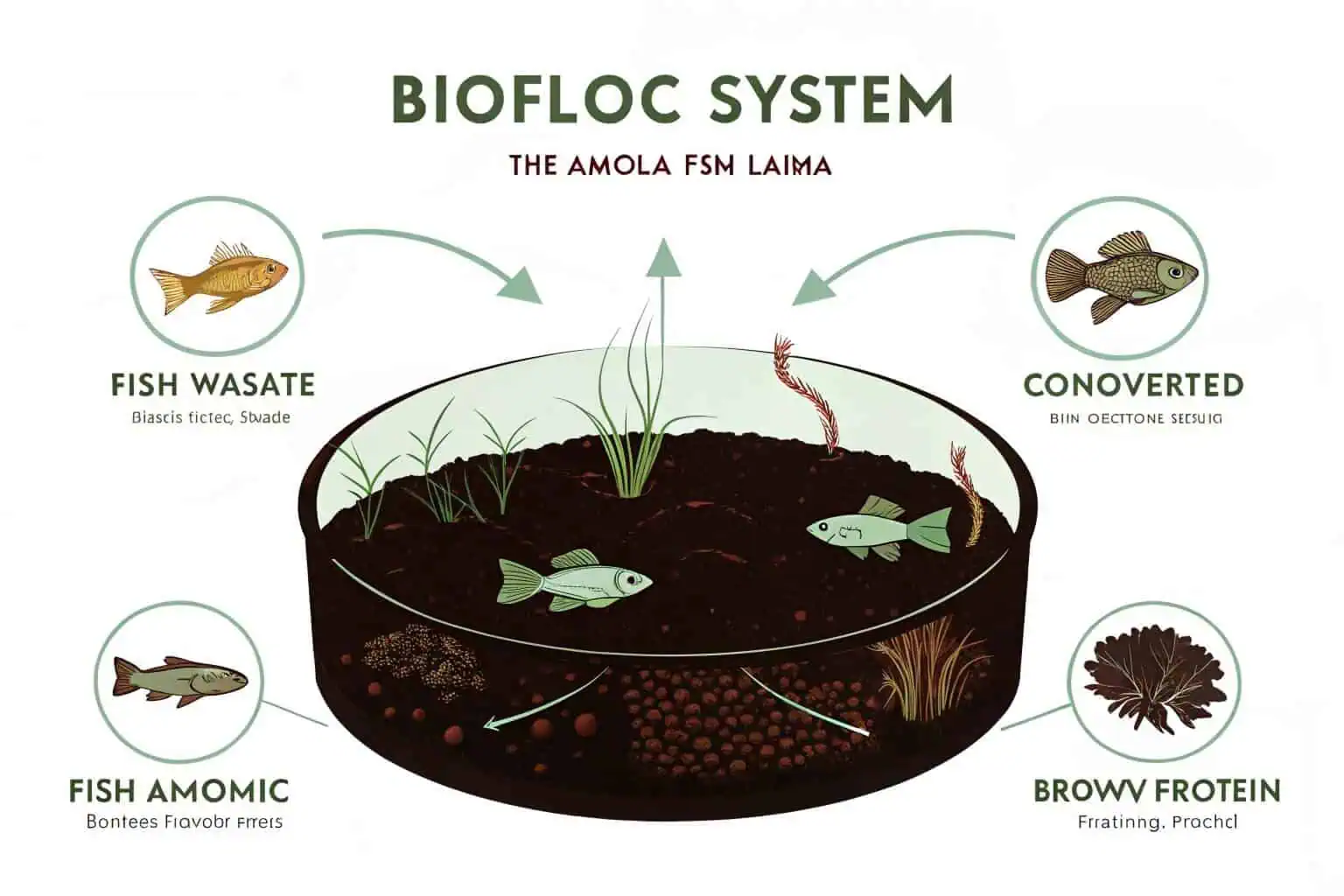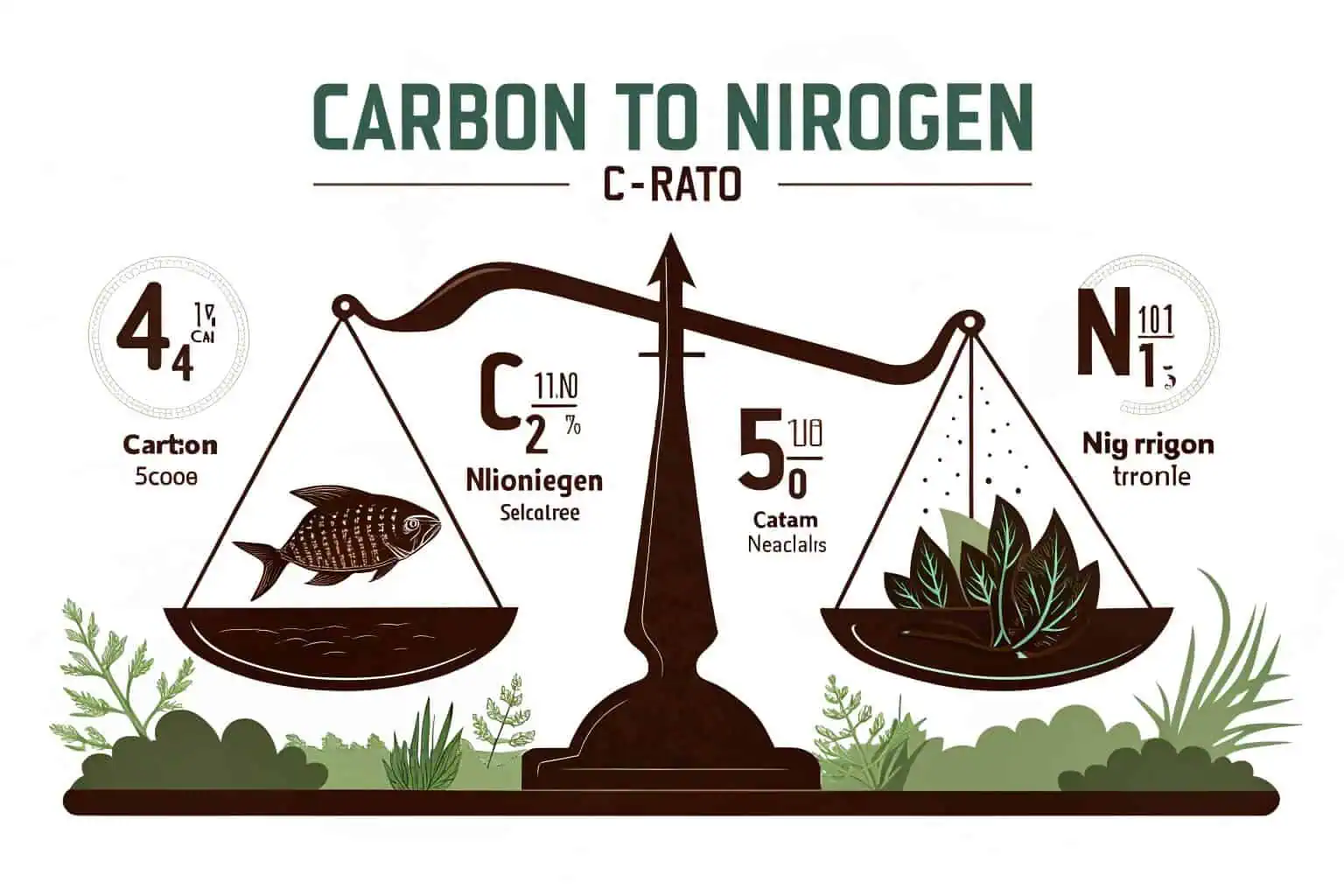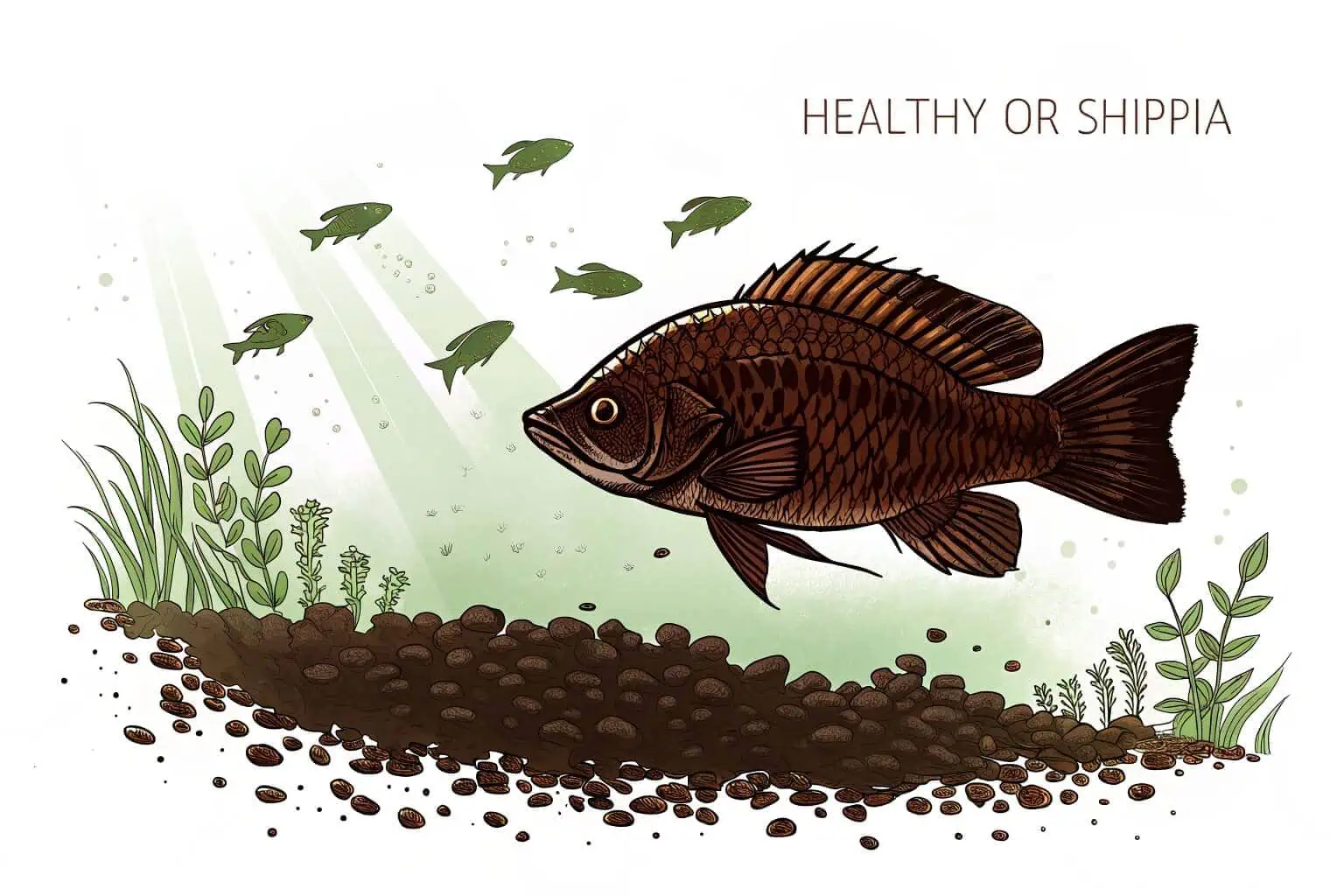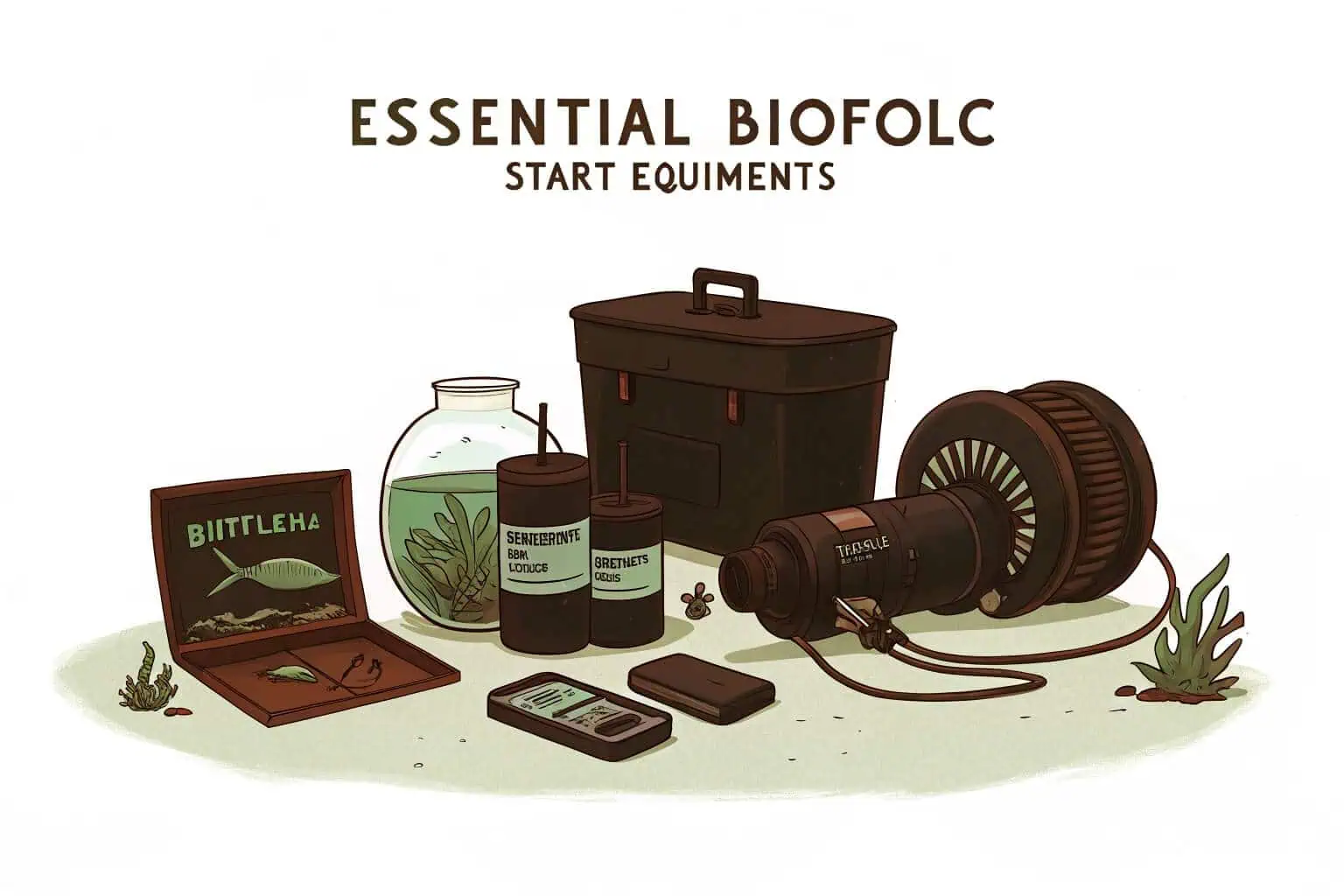What is biofloc fish farming?
Are you tired of the high costs and environmental impact of traditional fish farming? It feels like a constant battle to maintain water quality while feed expenses eat into your profits.
Biofloc fish farming is a sustainable aquaculture method where fish waste is converted into high-protein feed by microorganisms. This cleans the water, reduces feed costs, and increases your farm's productivity, offering a smarter, more profitable way to raise fish.

When I first heard about biofloc, I was skeptical. It sounded too good to be true. But as I delved deeper, I realized it was a game-changer. It’s not just a method; it’s a complete ecosystem in a tank. This technology represents a shift in how we think about aquaculture, moving from a linear system of 'feed-in, waste-out' to a circular, self-sustaining model. I was fascinated by the idea that the solution to waste was already in the water itself. Let's explore what this concept really means.
What is the concept of biofloc fish farming?
Struggling to grasp how a tank of fish can clean itself? The idea of using bacteria to create a healthy environment can seem complex and overwhelming, leaving you unsure where to start.
The concept is simple: create a balanced ecosystem. By adding a carbon source, you encourage beneficial bacteria to grow. These bacteria consume fish waste, turning toxic ammonia into protein-rich 'flocs' that the fish then eat. It's a natural, self-sustaining cycle.

From my perspective, the core of biofloc is about creating a community. It’s not just fish in a tank; it’s a bustling ecosystem of microorganisms working together. I think of it as building a tiny, controlled city where the residents (bacteria) manage waste and produce food. This concept completely changes the farmer's role from a simple caretaker to an ecosystem manager1. It requires a deeper understanding, but the rewards are immense. I found that once you embrace this mindset, the entire process becomes more intuitive and powerful. It’s about working with nature, not against it.
The Core Idea: A Self-Sustaining Ecosystem
At its heart, biofloc is about balance. In traditional systems, fish excrete ammonia, which is toxic. You either have to replace the water constantly or use expensive filters. Biofloc offers a third way. By managing the microbial community, you create a system that polices itself. The bacteria become a natural water filter and a supplemental food source, all in one. I believe this is the future because it addresses the two biggest challenges in aquaculture: waste management2 and feed cost. It’s an elegant solution that mimics the processes found in natural aquatic environments.
From Waste to Resource
This is the part that truly excites me. The waste products, like ammonia and nitrates, are not just neutralized; they are upcycled. The heterotrophic bacteria use these nitrogen compounds and added carbon to build their own cell mass, forming the protein-rich flocs. The fish then graze on these flocs, recycling the nutrients. My experience has shown that this can reduce the need for commercial feed3 by up to 30%. It’s a powerful example of turning a liability into an asset, which is a principle I think every business should strive for.
Key Components in a Biofloc System
To make this work, you need a few key things in place. It’s not just about throwing bacteria into a tank. You need to provide the right conditions for them to thrive. I’ve learned that paying close attention to these components is crucial for success.
| Component | Purpose | My Personal Tip |
|---|---|---|
| Tank | The container for your ecosystem. | A round tank with a central drain is best for solids removal. |
| Aeration4 | Provides oxygen and keeps flocs suspended. | This is non-negotiable. I use multiple air stones for redundancy. |
| Carbon Source5 | Feeds the bacteria to control the C/N ratio. | Molasses is cheap and effective, but start with small doses. |
| Test Kits6 | To monitor water quality parameters. | Daily testing of ammonia and pH is a must in the beginning. |
What is the principle of biofloc?
Is the science behind biofloc a mystery to you? The talk of C/N ratios and heterotrophic bacteria can sound like a complex chemistry lesson, making the whole principle feel inaccessible and intimidating.
The core principle is managing the Carbon-to-Nitrogen (C/N) ratio. By adding a carbon source (like molasses), you feed bacteria that consume nitrogen (fish waste). This converts toxic ammonia into harmless, protein-rich bacterial biomass, which becomes food for the fish.

When I first started, the C/N ratio was the most abstract concept for me. But I soon realized it's just like baking a cake. You need the right ratio of ingredients for it to turn out well. Too much nitrogen (waste) without enough carbon is a recipe for disaster, leading to toxic water. Getting this balance right is the fundamental skill of a biofloc farmer. It’s what separates a thriving system from a failed one. I learned to trust my test kits and observe the system closely, and soon, managing the C/N ratio became second nature.
The Carbon-to-Nitrogen (C/N) Ratio Explained
Fish waste is high in nitrogen. The bacteria we want to encourage need both nitrogen and carbon to grow. In a typical fish tank, there's plenty of nitrogen but not enough carbon. The principle of biofloc is to add a simple, cheap carbon source to the water. This allows the heterotrophic bacteria to multiply rapidly. They consume the nitrogenous waste, effectively locking it away in their bodies. A C/N ratio7 of around 15:1 is what I aim for. This ensures the bacteria have enough food to outcompete the harmful ammonia-producing microbes.
The Role of Heterotrophic Bacteria
These are the heroes of the biofloc story. Heterotrophic bacteria are incredibly efficient at converting organic waste into biomass. Unlike other bacteria in a tank that convert ammonia to nitrite and then nitrate (a process called nitrification), these bacteria assimilate ammonia directly into their cells. This process is much faster and prevents the buildup of toxic intermediate compounds8. From my experience, cultivating a healthy population of these bacteria is the key. It’s like having a microscopic workforce cleaning your tank 24/7.
Maintaining the Floc
The 'floc' itself is a collection of these bacteria, along with algae, protozoa, and other organic matter, all clumped together. Strong aeration is critical to keep these clumps suspended in the water column where fish can eat them and where they can effectively process waste. If the floc settles, it can create anaerobic zones where harmful bacteria can grow. I always tell new farmers to invest in a good aeration system. It’s the engine that drives the entire biofloc system9 and protects your investment.
Which fish is best for biofloc?
Worried about choosing the wrong fish for your new system? With so many species available, picking one that thrives in a high-density, microbe-rich environment can be a daunting and costly decision.
The best fish for biofloc are species that tolerate high stocking densities and can benefit from consuming the flocs. Tilapia and shrimp are top choices because they are hardy, grow fast, and actively graze on the microbial protein, reducing feed costs.

In my journey, I quickly learned that not all fish are created equal when it comes to biofloc. You need a species that is tough and doesn't mind living in close quarters. More importantly, you want a fish that will actually eat the flocs10. I started with Tilapia, and I recommend them to every beginner. They are incredibly forgiving and actively supplement their diet with the flocs, which is exactly what you want. Seeing them graze on the particles I helped create was a moment of triumph for me.
Key Traits of Biofloc-Friendly Fish
When selecting a species, I look for a few specific characteristics. First, they must be tolerant of lower water quality and high stocking densities. The biofloc environment is dynamic, and a sensitive fish won't do well. Second, they should be omnivorous or detritivorous, meaning they naturally consume organic matter and microorganisms. This ensures they will take advantage of the supplemental feed you are growing. Finally, they should have good market demand11 to ensure your farm is profitable. There’s no point in growing a fish nobody wants to buy.
Top Choices for Your Farm
While Tilapia and Shrimp are the most popular, other species can also work well. It often depends on your local climate and market. I’ve seen successful farms raising catfish, carp, and even some ornamental fish in biofloc systems. The key is to research the specific needs of each species and match them to the biofloc environment. I’ve put together a simple table based on my experience and research to help guide your decision.
| Species | Hardiness | Floc Consumption | Market Value | My Advice |
|---|---|---|---|---|
| Tilapia12 | Very High | High | Medium | The best choice for beginners. Very forgiving. |
| Shrimp13 | Medium | Very High | High | More profitable but requires more technical skill. |
| Catfish14 | High | Medium | Medium-High | A great option, especially air-breathing types. |
| Carp | High | High | Varies | A good choice in regions where it's a popular food fish. |
How to start biofloc fish farming?
Feeling overwhelmed by the idea of starting your own biofloc farm? The initial setup, technical details, and fear of making a critical mistake can paralyze you before you even begin.
To start, you need a tank, a strong aeration system, a carbon source like molasses, and test kits. Begin by preparing the water and developing the floc for 2-3 weeks before introducing your fish. Then, stock the fish and manage the system daily.

I remember the day I set up my first tank. I was both excited and nervous. My advice is to start small. Don't try to build a massive farm from day one. A small, manageable system allows you to learn the ropes without risking a huge investment. The most important thing I learned is patience. It takes time for the microbial community15 to establish itself. Rushing the process is the most common mistake I see beginners make. Treat it like a garden; you need to prepare the soil before you plant the seeds.
Step 1: Planning and Setup
Before you buy anything, plan everything. Choose your tank—I prefer round tanks for better water circulation. Select a reliable aeration system; this is your system's life support, so don't cut corners. Get your carbon source, probiotics (to kickstart the bacteria), and reliable water test kits for ammonia, nitrite, nitrate, pH, and alkalinity16. I drew a diagram of my setup before I built it, which helped me visualize the workflow and ensure I didn't miss anything. A solid plan is the foundation of a successful farm.
Step 2: System Inoculation and Maturation
Once your tank is set up, it's time to grow your floc. Fill the tank with water and start the aeration. Add your chosen carbon source and a probiotic culture17. For the next two to three weeks, you will 'feed' the water with small amounts of carbon and an ammonia source (like ammonium sulfate) to encourage the bacteria to grow. You need to monitor the water parameters closely during this phase. You'll see the water turn from clear to green and finally to a rich brown, which is a sign of a mature floc. This is a critical waiting period that you cannot skip.
Step 3: Stocking and Management
Once your floc is mature and water parameters are stable, it's time to add the fish. Start with a lower stocking density than your target. Acclimate the fish slowly to the new water. From this point on, your job is daily management. This includes feeding the fish, monitoring water quality, and adding carbon as needed to maintain the C/N ratio. I created a daily checklist for myself, and I still use it. It ensures I never forget a critical task.
| Startup Checklist | My Recommendation |
|---|---|
| Tank | 500-1000 liter round tank for a trial run.18 |
| Aerator | A commercial air blower is better than small aquarium pumps.19 |
| Carbon Source | Sugarcane molasses is cheap and widely available. |
| Probiotics | Use a reputable commercial brand for aquaculture. |
| Test Kits | API Freshwater Master Test Kit is a good start.20 |
Conclusion
Biofloc is more than just a farming technique; it's a sustainable and profitable revolution in aquaculture. It empowers farmers to reduce waste, cut costs, and increase yields significantly.
-
This resource will provide insights into the evolving role of farmers as ecosystem managers, enhancing your farming practices. ↩
-
Learn about effective waste management strategies in aquaculture to enhance sustainability and efficiency in fish farming. ↩
-
Discovering strategies to reduce reliance on commercial feed can lead to more sustainable aquaculture practices and cost savings. ↩
-
Understanding aeration's role can significantly improve your aquaponics setup and fish health. ↩
-
Explore this link to discover effective carbon sources that enhance bacterial growth in your aquaponics system. ↩
-
Learn about essential test kits to maintain optimal water quality in your aquaponics system. ↩
-
This link will provide insights into the importance of C/N ratio for optimizing bacterial growth and waste management in fish tanks. ↩
-
Preventing toxic intermediate compounds is essential for maintaining a healthy aquatic environment, ensuring the success of your aquaculture efforts. ↩
-
Exploring biofloc systems can provide insights into sustainable fish farming and waste management techniques. ↩
-
Discover which fish species are most effective in biofloc systems to maximize your aquaculture success and efficiency. ↩
-
Find out which fish are in high demand, helping you make profitable choices for your aquaculture business. ↩
-
Explore the advantages of Tilapia farming, especially for beginners, to understand its forgiving nature and profitability. ↩
-
Learn about the technical skills required for shrimp farming and how to overcome common challenges for better profitability. ↩
-
Discover effective methods for catfish farming, particularly with air-breathing types, to maximize your yield and success. ↩
-
Understanding microbial communities is crucial for successful tank management and ensuring a healthy ecosystem. ↩
-
Discover comprehensive reviews of water test kits to maintain a healthy aquatic environment for your fish. ↩
-
Probiotic cultures can enhance the health of your aquaculture system. Discover their benefits and applications in this informative resource. ↩
-
Explore this link to understand how a round tank can optimize your aquaculture setup and improve trial outcomes. ↩
-
Learn why commercial air blowers are more effective for aeration in aquaculture, ensuring better oxygenation and health for your fish. ↩
-
Discover the features of the API Freshwater Master Test Kit that make it essential for monitoring water quality in aquaculture systems. ↩